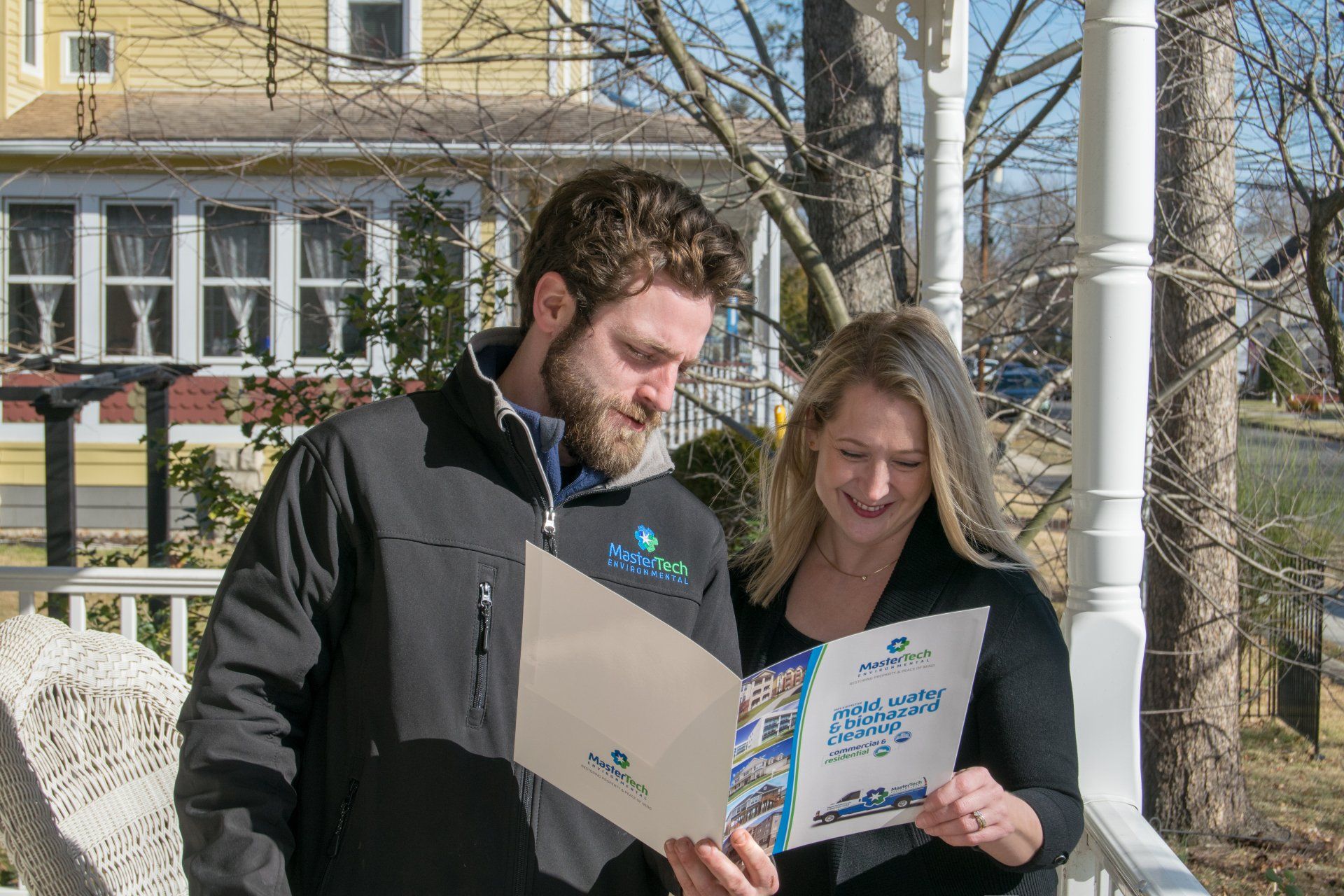Mold Testing Services
Professional Mold Testing & Air Quality Testing South Carolina
Mastertech Environmental is a mold remediation
and mold inspection company
providing mold testing services to all of Horry County SC, Georgetown County SC
and Brunswick County NC.
Mold testing, or mold sampling, is the collection of surface samples or air quality samples to identify possible mold elevations. The samples are subject to laboratory analysis to determine the fungal ecology. Whether it is collecting air samples to determine air quality or collecting surface samples to confirm species of mold, the objective is to determine if there is an elevated mold presence in an indoor environment. Through mold testing, certified mold inspectors can scientifically identify if there is mold, the amount of mold, and the species of mold. If an inspection with testing confirms a problem, the next step is professional mold remediation.
Mold is not always visibly apparent. Strategic mold testing coupled with a comprehensive assessment can help to reveal hidden problems. If you are worried about mold in your residential or commercial property, consider getting it tested. To learn more about services near you, call today -- 1-843-236-3399.
GET HELP NOW
Send us your details and one of our Mold Remediation & Inspection Experts will get right back to you.
Worried About Mold?
Get your home tested today.
Understanding Indoor Mold Growth in South Carolina Buildings
Mold naturally breaks down organic matter and is an important part of the ecosystem. Airborne mold spores enter properties through openings like vents, doors, windows and mechanical systems. Spores can also attach themselves to people, pets and things that go in and out the building. There will always be some level of mold in most indoor environments. Mold only becomes a problem when it exceeds “normal” limits and begins to develop on building materials, furniture and personal belongings. Once mold becomes visibly apparent on walls, ceiling, and other surfaces -- professional remediation is often necessary to restore clean and safe conditions.
When settled mold spores are exposed to enough moisture, the spores will germinate, root into materials and develop into a major problem. While some mold problems are glaringly obvious, it is not always easy to identify a mold problem. Microscopic mold particles can spread and contaminate hidden surfaces like in wall voids, under carpet, behind wallpaper, above drywall ceilings, and all kinds of nooks and crannies. Additionally, air quality testing is the only way to determine if mold has compromised your indoor air quality. With testing, we identify elevations that exist beyond the visibly apparent.
Mold Testing & Mold Inspection Services Myrtle Beach SC
The scientific data from surface and air testing is most useful when coupled with findings from a detailed and comprehensive mold inspection of the interior and exterior conditions of the building structure. A mold inspection provides important context for the lab results. The main objective of a professional mold inspection is to determine whether or not there is a mold problem. If there is a mold problem, the secondary objectives are to...
- Identify the underlying moisture problem causing and sustaining the elevated fungal ecology
- Identify the severity of the contamination, the materials contaminated and the number of areas affected.
- Provide the appropriate recommendations for effective remediation and future prevention.
Mastertech’s mold inspectors are specifically trained and certified to conduct mold inspections, surface sampling and air testing for mold. We use advanced assessment tools and equipment like moisture meters, thermal imaging cameras, video borescopes, hygrometers, particle counters and bio-pumps to perform a detailed assessment of the areas of concern. We provide detailed lab reports and inspection reports.
Hidden mold growth is often hard to find without the help of a professional. Mold growth can hide behind building materials, under flooring, in wall voids, above ceiling tiles, behind furniture and more. A detailed assessment with testing will determine the full extent of any potential mold issues.
843-236-3399
Mold Inspection Process
Through moisture mapping with the use of moisture meters and thermal imaging cameras, Mastertech inspectors can take a closer look at the dampness in the environment and isolate potential moisture problems that could create an environment that is conducive to mold development. By collecting air quality samples and surface samples from the area(s) of concern, we can scientifically identify possible spore elevations and types of mold present in the indoor environment. Samples are subject to analysis by a 3rd-party accredited laboratory. Your Mastertech inspector will verbally decipher the lab results and develop a detailed inspection report outlining the findings, the conclusions and the recommendations. Mastertech inspectors are honest and will always report findings in a straightforward and non-alarming manner.
Myrtle Beach’s Most Trusted Mold Specialists
At Mastertech Environmental, we believe in providing our clients with the best services possible, and that means thorough inspections with honest reporting and detailed documentation. Our inspectors are knowledgeable, experienced and detail-oriented. In addition to great technical expertise, we also provide great customer service. Mold and moisture can mean health and safety risks. Comprehensive mold inspections provide the valuable information needed to properly address the problems and restore clean & safe conditions. Mastertech inspectors will always respond in a professional, respectful, straightforward and timely manner.
Mastertech of Myrtle Beach services all of Horry County SC, Georgetown County SC
and Brunswick County NC. If you are in need of mold inspection services, call today to learn more -- 843-236-3399.


